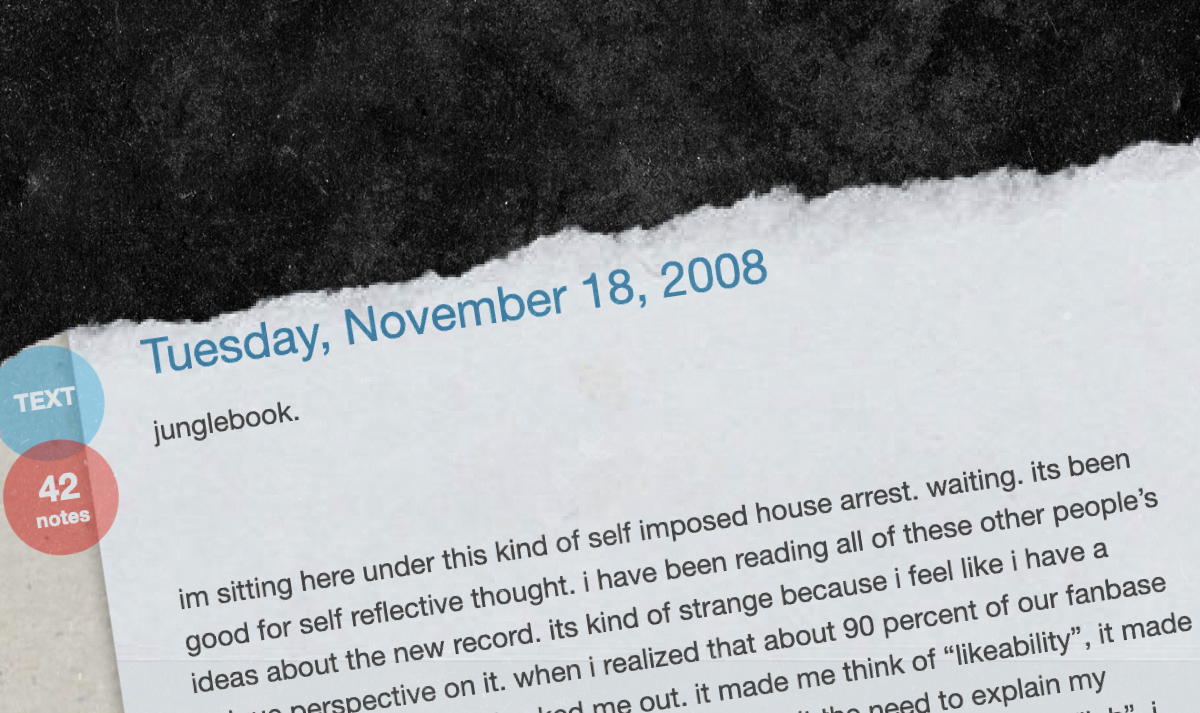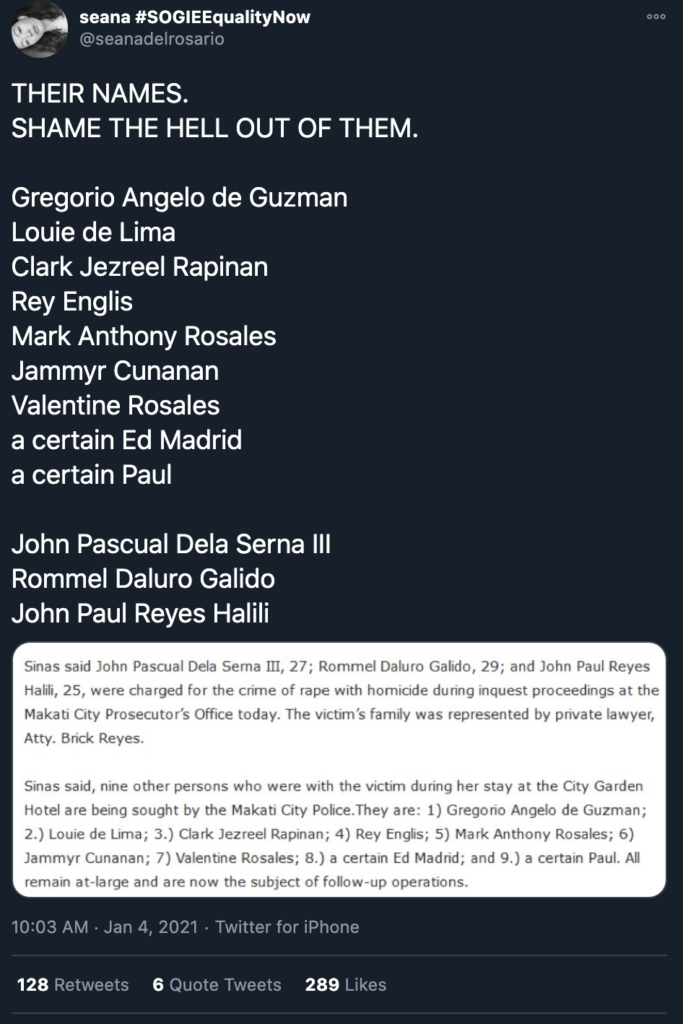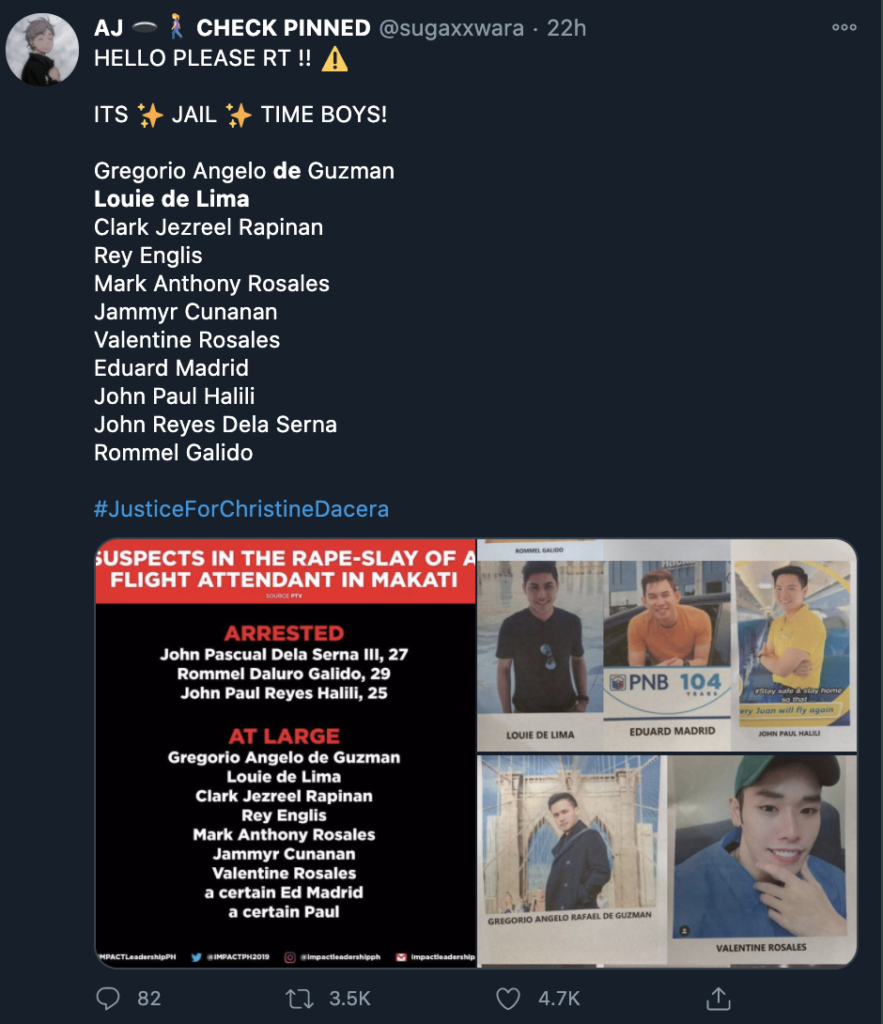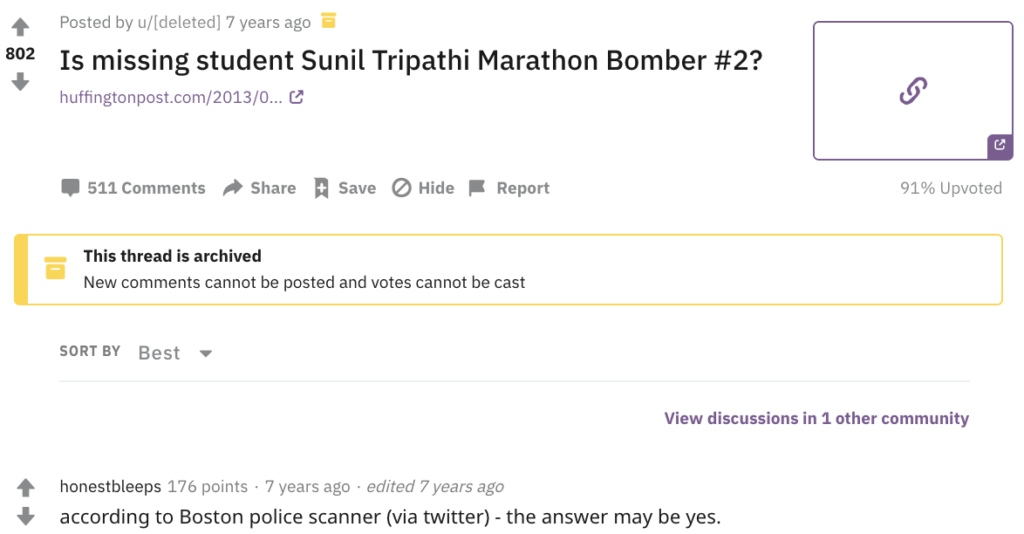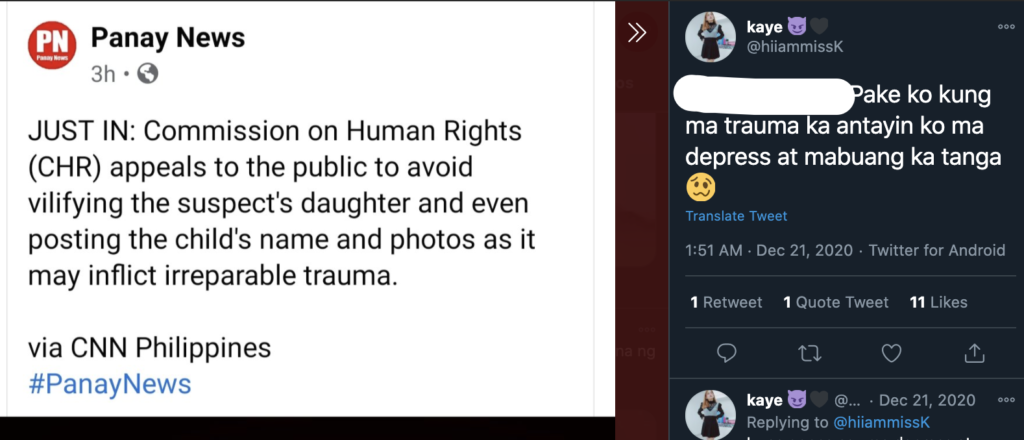I watched a city burn down before my eyes on a flickering feed. Each video perfectly designed to twist and sicken me, relentless and damning despite the amount of distance between me and Marawi. On an early Sunday evening in 2020, I felt the cries of my country over a cataclysm that covered the sky in black, and every day, see at the sidelines new and resurfaced videos of death and destruction passing through screens and filters. A death ad infinitum, preserved forever as spectacle for the world. Technology preserves these moments, gift and curse of eternity laid in human hands.
The internet revolution had brought us both the curse of permanence and an inevitable brainwashing. With the size of the internet doubling every five years and feeds favoring the most masochistic, soulcrushing content that has given us doomscrolling in our vernacular, we live in an age of despair. The worldwide internet exists only as a promise; a medium that has seemingly rendered distance negligible (a hyperlink theoretically brings you nearly anywhere in a single click, more detailed on the Critical Atlas of the Internet) still has us contained to the closest spectacle if we aren’t gated already. We know so much yet so little.
Somewhere in the western world, the decision-makers dismiss the internet plight, blind, or even untouched, to the media and messages that tell these stories. When Twitter, Facebook, Amazon, Shopify, and dozens of other companies followed in taking action to cease domestic terrorism in the United States, it was not only as a result to five (and counting) lost lives. In reality, it was a drawn realization of the millions of lives that have been thrown away by the internet age––many of whom existing only as numbers, names left in scanned lists to decay. Footnotes to life where the living are pummeled around to ignore their being.
The most painful part of this is the forgetting. This may be entirely paradoxical, but this is the internet I breathe in and live in––and if the internet has given me anything, it is the knowing that I am exceedingly unspecial and my experiences never come alone. The most mundane things become permanent on the world wide web: the million dollar webpage and all its decayed pixels and spam redirects, screenshots of a tweet that angered a Kaworu Nagisa profile picture left to follow OP to their next four usernames, an image shared and rehosted over and over. Yet, our links are rotting and information we treasure lost. Little web experiments I made over my high school years purged from s2005016.students.dlszobel.edu.ph without any foreseeable warning, text files and notes on disjointed services that toss away data, overly-cited .edu class pages and death notes.
The average life expectancy of a webpage is a hundred days. This average is likely to be far lower for materials that live on social media. Now, half of hyperlinks cited in United States Supreme Courts decisions are broken; for scientific journals, this number climbs up to 66% or so. Two decades ago, a website might have been up for two years and seven months.

The Attention Game
For years, startups have recognized this information overload and made many a revelation on the best way to catch up to their existence – a ticking bomb. This is where the “build fast and break things” mentality thrives, right next to the the “execution is everything” mantra. Indeed, we live in a complex age where the richest men are victors because of luck and timing––far more incalculable than anything else with the only consistent constant being persistence.
The idea here is that defeating the beast of link rot inevitably wins on attention and status. (You win against materials that simply no longer exist, of course.) Attention is a zero-sum game. Content has never been so abundant and impossible to dig through––we would sooner die than be able to experience a moment’s worth of media uploaded unto the net. Then, what one wins, another is denied. Humanity’s own limited cognitive capacity has naturally built up constraint and limitation against a once-seemingly infinite world where distance and proximity meant nearly nothing. Delivery of information from one point to another happening instantaneously is near impossible when we exist in digital echo chambers; you assume you could care about the Philippine drug war, the reality faced by Uyghur Muslims, or really––even the worldwide solidarity and outrage towards the Black Lives Matter movement. Yet, they appear as passing materials and items that are waved in front of you (if ever) and dissipate as quickly.
It’s a shame that many of the world’s most important problems are also seemingly vapid, and that man is inherently imperfect at the act of prioritization, and absolutely terrible at judging importance.
Or, everything is important and worth fighting for––but nothing is life-changing. And accepting these two seemingly conflicting truisms is key to overcoming the inalienable beast of a web we’ve grown into. Like how prioritization demands internal value alongside urgency in time, we come to accept that even the most mundane, original pieces of content on the internet are worth saving. I don’t mean spam bots (or maybe they still do to understand their behavior?) and what’s lying around in my Akismet filter, but any item that one puts out on the internet should be ours to save. Evermore if they expect it to be. Our data alone is invaluable, far too cheap for how easy we give it away now. Our memories become priceless, and the internet’s promise is the closest thing we have.
Listen to me. I’m twenty and have known nothing before the internet, and people younger than me who grew up even more hyperdigitalized (I came when the emerging world was getting laptops as a thing, younger brother coming in when iPads were an academic expectation and thus, everywhere) have the art of everything we said existing here and now. I’m scraping together photos from senior year of high school––something that barely happened three years ago. I feel like these experiences sometimes exist no more than as a physical vestige. Yes––they happened over Skype, the shitty Facebook Messenger, Xanga, my first website’s cbox.ws––but my personal data on the individual level means nothing. I can’t retrieve that, and I’ve tried. Forum messages wiped, I desperately try to recover the last pieces of writing I made still available on the Wayback machine, the photos I edited and put together of my friends before I deleted it in a flash of fury, deleted accounts wiping away time. The algorithm will never know that the things I most enjoy I refuse to interact with. Human behavior is jagged and cannot be contained.
It might even be a minor form of gaslighting. The attention economy handpicks what survives, and no one remembers how loss comes so easy. It was a mistake when Twitter announced that inactive accounts would be wiped to make their usernames available, product managers behind completely forgetting the existence of accounts of the deceased that no one has any access to. The average user won’t be able to get the assistance needed to enter their sibling’s account, and the security implications of that are still debated anyhow. When I was a rabid teenager, I completed the radical act of clearing off my Facebook friends list because I felt alone and pissed at the world or something like that. The only person I kept on my list was my grandfather who had passed, his account barely at a few hundred friends, years before the company introduced its memorialization feature. My mom used to pass her phone to me, asking me to make some texts for her. I’d see that conversation with her dad still propped up on the list, hundreds upon hundreds of undelivered messages––even after his passing.
Everything saved will be wiped away. We overestimate the importance of our words. The things that matter most to us are likely not what’s preserved by another. Self-preservation in the age of internet decay must then become priority. The average individual like you and I will reach in, nothing coming out. This is the lie of the internet, then.
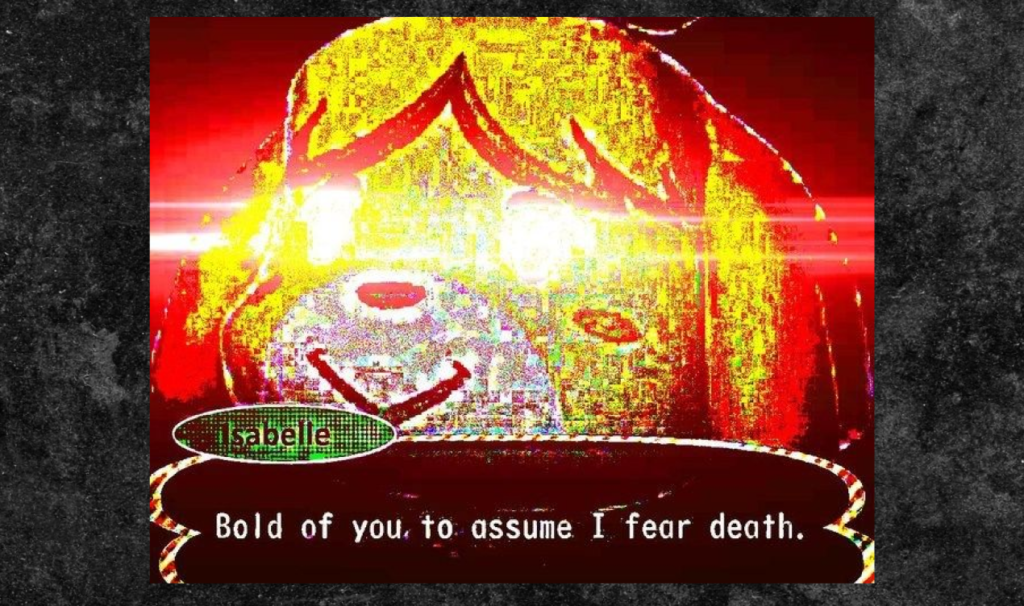
The Rise of Undead Content
Low resolution, overcompressed images littered with artifacts are almost constant news feed items despite technological evolution begging for us to drop it. “Needs more JPEG” is entering both our standard ironic vocabulary and visual language, so much that a new realm of meta-meme (see: deep fried memes) has spawned using artifacting as another layer of commentary. Many a bored CS kid’s side project spawn tools that compete on who can shittily compress images better than the other.
The low resolution internet will continue to exist and evolve its own language while flatscreen, curved monitors become a regularity in households. This is by design. It’s harder than ever to download and save content we see online, no matter how well-crafted or beautiful it originally is. (It’s even harder to parody things nowadays. Thankfully, YouTube Poop is difficult to miss.) Instead, we resort to third-party or system tools to capture things: asymmetric screenshots, Twitter video downloaders run by bots that store things for 24 hours, Youtube2MP3 compressors passing on the same source code and CSS still identical from a decade ago until they get shut down and revive with a swapped domain name a month later, iPhone screen recordings. If reposting is an option at all, it’s harder to embed information and commentary on things: representing the content without a share changes things completely algorithmically. Sharing menus are complex and the previews look worse. The goal of all content in the internet is to directly correspond with someone. For many, this may be intuitive of a view on the feed as the first-viewer, but for others, this communication best takes effect in messaging platforms and emails––which reposting/resharing content (for networks they may not even be on) is futile. We continue to design platforms that make sharing and consuming content ridiculously difficult to supposedly pull users onto it when we know this will always be met with resistance, and may even be causing friction in the adoption process. Such a natural action becomes a frustrating hurdle by design.

When content takes the form of a repost, reupload, re[something], we’ll of course see more artifacting, and will also likely see no link to the original piece (sometimes unnecessary––unless there’s comments/replies). I’ll commonly see collections of Tumblr posts and threads on my Twitter or Facebook feeds with simple screenshots like this.
Locating the source content is impossible. hetcisphobia as a user is gone (we could potentially do a namesearch and trace their previous usernames, but that’s not likely going to work), and Tumblr search is so broken that it’s going to be impossible to find this even if we have all of the contents. Within at least 21,883 notes, we lose so many more layers of information: notes on Tumblr can mean standard likes and reblogs, but each reblog can also contain their own tags that are generally used for commentary too, and notes themselves can be comments (not threaded to the original text), or reblogs with replies added (threaded to the original text).

Worse instances of this happen in today’s culture of Instagram activism and social media journalism. Reputable news outlets continue to put up paywalls, and links are discouraged from sharing on platforms like Facebook and Instagram. (On Facebook, posting a link with preview makes your accompanying caption unshareable unless the intended sharer enters a specific menu; Instagram only gives you one profile link, links aren’t clickable on posts, and you need at least ten thousand followers to include swipable links in your stories.) In response, graphic designers condense information into swipable squares and story formats, trying to put all key points on the image.
In this example, I failed at adding sufficient context to this call for justice on Fabel Pineda’s case. The second accompany graphic that the Facebook page didn’t share also deals with police brutality numbers in the Philippines compared to the United States. When images are reposted, the essence of materials like this go to waste: there are no calls to justice or action items, it becomes material for anger or desensitization at worst––becoming material for sensationalism on social media at best.
During the 2020 United States Presidential Elections, Republicans began circulating claims about the fraudulence of absentee ballots that tend to lean left (since you know, sane people would rather not vote in-person in the middle of a pandemic) –– Democrats must be manipulating votes, letting dead voters cast in ballots! Screen recording videos like the above circulated Twitter. It was clearly convincing and without manipulation: there was a census record, address, obituary, and full name of a voter that should have passed long ago; inputting these details on the ballot checker however brings up that they passed something in! The screen recording must have been proof –– but of course, the claims were unsubstantiated, attributed to clerical error, and also ignorant of the fact that if manipulation was going on it would probably be more subtle than this.
We do know however that the screen recording is for now, a window of sincerity and truth in an easily editable internet. The recorded swapping between applications to go to his chat makes it look more genuine, even if you didn’t follow the same steps on the website he shared (and I’d gauge that many believers did not have to replicate the same steps to believe in it). This is the same reason why taking a photo of your computer screen when you’ve done an “Inspect Element” edit adds another realm of believability, even if there’s really no difference in the layers of manipulation done. Touches of human interaction with digital interfaces breathe life and realism into our engagement in the cyberspace: Instagram story pen markers over screenshots and collages make things more engaging, skewed croppings as if we’re slicing and presenting specific parts of content to our friends. Representing material as a more intentional capture than a mere link tells us of new behaviors, a gesture of “you don’t have to leave our conversation” or “see what I want you to see from this article.”

While there’s a more genuine sense of realism that thrives when humans touch and represent digital content, we also lose context. The issue with digital journalism and the prospect of civic engagement comes to this: the nature of mass-scale reporting, or any type of reporting that deals with facts, is impossible to navigate with the way humans communicate and deal information. We love anecdotes, stories, personal retellings, and encounters. Exaggerations done right are a love language, facts do not move us. The more viral and worthy of telling something is, the more it has been reposted and lost of its original content; someone on the internet will always say it louder, and this retelling is a necessary evil to reach the largest audience. Inherently, this poses problems with reporting that attempts to link to posts and trace public discourse, instead turning very real words and commentary (even if they come under a veil of anonymity) into quotation games and blanket statements.
Technology gives us countless platforms and tools to make our voice heard. Words that surface the earth and are accessible in a click, no publisher needed on the most famous platforms and reels, yet we regress into the same flaws of the broadcast and broadsheet.
Content disappears faster than ever. This is the truer reason as to why reposting is barely viable. We have these traces of information and sayings, but without source links, they remain of questionable authenticity. Tumblr urls and posters die, anonymous names and erratic usernames leave us unknowing of where they were off next. Other platforms are less forgiving: Removeddit can preserve most Reddit threads (including the poster usernames of deleted comments) if they’re not removed immediately, but Chrome Extensions exist to nuke your entire history better. Privacy settings shut off people’s trails completely. Twitter used to show the usernames of private accounts that people were replying to, but now they’re obscured. For others, their existence is nefarious and ghastly as getting quote retweeted by a private account is untraceable; all you see is the little numerical indicator of your tweet rising with nowhere else to look. The Reddit thread that infamously misidentified the Boston Marathon Bomber, a worldwide wreck, was cited endlessly by journalists praising the work of anonymous internet sleuths––until the real suspects were released and their unfortunate target revealed. Edited, manipulated screenshots have the same authenticity as the deleted real unless the investigator looks closely to find traces of human intervention, Photoshopping, or sheer impossibility of origin. While many comments on the /r/WTF thread were deleted, others still remain as a grim marker of how both the internet must be preserved for its wrongs as it is with its truths.

Of the age of no icons and link rot
Link rot is escalating as we move into an internet age that respects the policing and moderation of content, moving to avoid the atrocities that occurred with the 2013 Reddit incident.

John DeFoe took a look into his fourteen-year old abandoned blog, a format any Livejournal, Blogger, or Tumblr kid should be familiar with. A little like our social media feeds today, but blogs have a more tangible, spatial component to them as you occupy your own part of the web. While DeFoe’s domain registration had long expired, Google had been pretty good about preserving Blogger content. He dove into his posts, seeking the fate of his hyperlinks.
He found that only 18% of external hyperlinks still resolve properly. While links to viral videos were generally dead (DeFoe’s blog was a part-time viral-video curation site), he could easily retrieve them and find another copy. Chocolate rain, Rickroll, Nigahiga’s early videos… these are just the tip of the iceberg of the internet’s cultural gifts that stand the test of time and still last, forever.
…
For personal content exchanged between friends and family, this is a different issue.
Theoretically, large tech companies have access to everything, really. We’re warned that nothing deleted is really ever deleted. Attempting to delete a social media account is pretty difficult, frequently reversible or padded with weeks of waiting before the deed can be done. These come as no surprises when data has surpassed oil as the world’s most valuable resource.
Yet even in the case of criminal investigations, state investigators frequently conflict and collide with tech companies that have been designed to track every trail and keystroke, predicting our behaviors, wants, and needs, knowing how often we stay in one location or the other, visualizing our waking hours and desires. Data is “out of jurisdiction”, data is a tremendous problem, data must also be protected from ill-intentioned law enforcement agencies. It’s an enormous, painful grey line that we constantly tread.
When we look at our own personal situations and relationships with technology, we realize our profound unimportance and simplicity. There’s little chance that a tech company will surrender information to us or point us somewhere; all it takes is a copyright strike, a forgotten password, a deleted Photobucket… everything saved will be wiped away, truly. Recovering your childhood Neopets account is a grand heist in itself, articles about recovering your old Myspace account get more attention than present-day Myspace itself, and unless you remember your 38th private Twitter username change –– good luck finding it at all.
When I was twelve, I hosted and administrated a Minecraft server for my friends. It was one of the go-to servers for the school, and I was ridiculously proud; LogMeIn Hamachi presence and all because I couldn’t portforward our IP address. One Saturday, we gathered together to create a server “teaser” video to the entirety of Matchbox Twenty’s “Let’s See How Far We’ve Come”–– a masterpiece, really. It’s gone.
It must have been stricken down due to a copyright issue and navigating my twenty plus or so Google Accounts brought me no luck. It’s the most heartbreaking thing. I remember putting it together painstakingly on a cracked version of Sony Vegas Pro, recorded with a cracked version of Hypercam (Registered, this time), and drowning it out with video effects, gifs, and blending modes. I even timed in subtitles.
It seems minor, but it’s also one of the truest records of memories I have with my friends at age twelve. If it turns up again, I wouldn’t know what to feel.
…
No one really expected Twitter and giant tech companies en suite to have deplatformed the President of the United States, signaling a new era on voice, platform, and the limitations of cyberjournalism. However, like Ted Cruz’ Twitter likes, Trump’s words remain as a memory to the general public despite massive documentation and archival done (since they are records of the President’s words). Words that could anger and incite a world in seconds without care for geographic boundaries turn into
Attention and public interest also isn’t enough to save content. The use of embeds as citations are common practice in news articles. Embedding a tweet allows us to witness all the changing variables in its authorship: the growing and shifting number of replies, likes, and retweets on something as its impact spreads; the author’s photograph and name; public response and thought associated with that item. Instead of potentially screengrabbing something without all its associations and full metadata, we’re able to give our audiences power to dig deeper in––a powerful thing that no other piece of media can truly replicate. (What if you could reference a movie scene and directly see the screenplay, surrounding elements, referenced materials? What if music journals had pointers to the exact moments in songs where the hook falls apart and leaves a dissatisfied pit in the critic’s stomach? What if the television was interactive and could show you all the progress updates on a report and let you swap to the weather if you need to give it a quick check? Wait…)
Twitter’s ban of Donald Trump––quite possibly the most dangerous social media user in history so far for the sheer magnitude of his reach––led to ultimate case of link rot across the internet. Even with his rhetoric, it was impossible for me to comprehend that this would have ever been an issue: he’s a public figure, his tweets are safeguarded and archived, and he’s likely one of the if not the most quoted and known figures in the waking world. A single statement impacts hundreds of nations.
Even if something survives the internet’s decay, the loss of context may as well render it useless. We can pass down knowledge with anecdotes like it were tribal or salvage screenshots, either end putting us at odds with the constant dichotomy presented by technology. In Are We Human?, Beatriz Colomina articulates this perfectly: we face both the magnificence of technology as the most human thing as we are the only species that creates tools to make tools––reinventing ourselves with artifacts, and also the wrath and dangers of technology in its wiping of us, and perhaps, in its existence and our misjudgment. Tools will remain as tools.
Undead content exists at the precipice of being erased, manipulated, forgotten, or untraceable. To the online citizen, it could very well be any of them. This doesn’t stop it from dominating the web. As the internet mimics the real world, content is more meaningful when we turn them into abstractions, ideas, and passive remarks. We only scrutinize content that doesn’t serve our our agenda or interests. Humans simply don’t have time to wade through what the internet has given us, but we encounter the web and its conversations with an unparalleled amount of trust. Even if links and stories are long dead, we retell them in even more comments, paraphrase them terribly on blog posts that will be dissected for SEO farms, and find them once again in its JPEG glory somewhere in our emails. They are inescapable: a matter of the internet shaped by us, for us, glorified by us.

Beyond content
My biggest frustration with today’s internet is that its design and structure innately awards sensationalism, maintaining no standards for preservation The movement towards curation over present-day’s influencer domination reflects a necessary need to both free us from information overload to the historical model of putting the work of the digest into the hands of select curators, and the larger community at once.
- Many review websites aggregate the tastes of individuals into larger lists, letting you traverse collections to individual taste. A Letterboxd account serves as a user’s complete diary and review collection, be it casual watcher or IndieWire critic. Both collective ratings and individual reviews tell the story: when purchasing something on Amazon, you need to look into both numerical ratings and individual reviews.
- Superorganizers writes of Robert Cottrell, the world’s “most read” person who writes a newsletter that seeks out the five best articles of the day. To accomplish this, Cottrell readies his iPad and pulls in hundreds of publications in his personal RSS feed (a practice that in itself is dying), article strippers, and the usual front page readers like Reddit and Hacker News. As he admits, he skims, speeds, and digests content to pull this feat off, missing out on materials that don’t immediately hook you in the first few lines. Many of the greatest pieces of writing will be missed by acts like this, but it at the very least handpicks more effectively than slow, conscious reading––though as he produces selections of five of the “best” reads each day, are these really the ones that instigate, question, and provoke?
Like any curative act, there will always be extremes, and averages are called that for a reason––they’re not very interesting. Ideally, a balance should be stricken somewhere between the individual voice and the collective’s want; we must live in a world of no idols, while also grasping the entire spectrum. How do we resist turning the internet in all its magnitude and grandiosity from falling into the same pitfalls of the printed word?
Headlines accompanied with pretty illustrative pieces offer us little about what truly matters: the links and networks intertwined with our content. Social media feeds are even worse: before Twitter introduced its quote tweets panel (which we were still suggesting as late as 2019) — the only option to investigate any ensuing conversation from a tweet was to copy its URL, manually strip the UTM code tacked on, and paste it into the Twitter search bar. It took years for Twitter to implement this functional move when billions of tweets had long been making use of this feature. Today, we see the company experimenting with people to forcibly encounter the Quote Tweet panel (where the original source is viewable and highlighted) before retweeting any item, and any option to disable replies (such as the most constricting: only letting mentioned users reply, usually done on tweets with no @s) still allows for the quote tweets. Today, we see chains of Trump’s deleted tweets as bygone records. Alt tweets and mistakes slip by and become material for the rumor mill. Historians will be digging into the age of society that lived in these moments, thinking that they would be preserved and documented––until they weren’t. The whiplash we experience when realizing that all our online records that were supposedly digital and near-eternal is jarring, decentering us from conversation; when we exist in real life, we at least have physical manifestations and signals that let us latch onto memories better, have interactions that confirm vivid encounters, and intuitively turn to paper or the net to write things down. Yet, the internet doesn’t have this. We’re navigating a lull of the web where environments are both ephemeral until they aren’t, where we have no control of the ever-changing conditions of the cyberspace. This is the internet of the dead, of false memories, and gaslighting. I live my youth in pixels and lose it as quickly as it happened.
Preserving the web
Envisioning the future of recordkeeping is terrifying in the internet’s current state. Millions of tweets, posts, and comments are defunct. World-changing broadcasts wither, unrestored. We were promised that the move from analog to digital would allow us to preserve moments, but it seems like this is further from the truth when we struggle to follow a day’s conversation in an expanse of broken links.
There are many efforts in academia that currently exist to better preserve the web for historicity. You may be familiar with some of them.
- Perma.cc focuses on helping scholars, journals, courts, and others create permanent records of the web sources they cite. It’s
Tools and initiatives remain at that. Independent efforts and initiatives to preserve the web are only so effective. It will require massive cultural and practice-based efforts to reform the web into a joint effort of preservation––a responsibility that designers, journalists, and humans alike must share. We use the web in detached, disjointed phases where our communication methods do not match up with our tools, designers have a long way to go in balancing security, product delight, and archival. Mindfulness from several parties is the only way to go to bring back the eternal side of the internet.
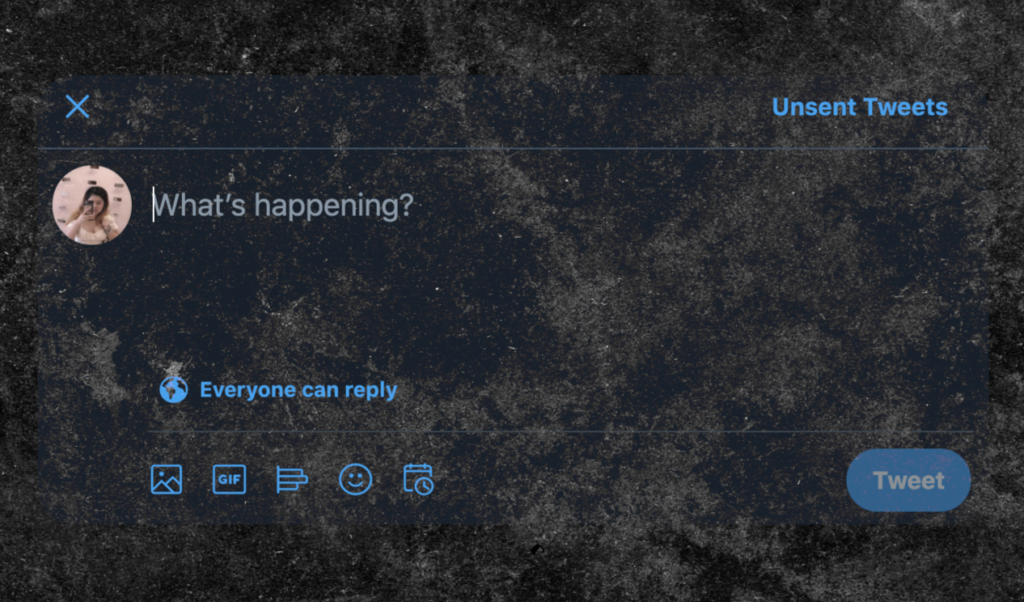
By design
Like how the web is currently architected to make sharing content difficult while simultaneously producing tools that make creating original content easier than ever, we need to better investigate both our human relationship with communication along with design’s role in constraining us from free, information sharing. Because humanity has never been able to communicate and exchange thought at such a rapid pace, we may need a radical rethinking of the standards and practices we employ when referencing ideals to better use tools to their maximum potential: to archive, restore, remark, and preserve––respecting both provenance and posterity––using full use of the tools we have developed, with intentional awareness of what these materials could mean.
The goal of the human user (all of us) and of the designer and all the historians, journalists, and communicators within must converge in the name of preservation and longevity––of reanimation of the web for the space it can fully be. Our tools must work towards inching us closer towards enabling a future that respects the content that we can so easily craft, and man must take extra steps to propel this treatment of content to the mainstream.

The role of designers
On Reddit, text posts follow a very standard format. A 300-character limit title, a markdown text body. Different communities spin this format around: /r/askreddit limits the larger text body and restricts the questioner to the very title box, people with questionable moral compasses in /r/AmItheAsshole start off each thread with the characteristic “AITA” before writing biased paragraphs on real-life messes. Each subreddit has its own unique cultures, norms, memes, reposts, and drama, carried on by tens of thousands of visitors each day who absorb and partake in their favorite niches.
To better serve each subreddit’s purpose, moderators impose bots, tagging systems, and titling standards that play on this raw text post format. /r/tipofmytongue that features people struggling to name something they do their utmost best to describe is an excellent example of how subreddit moderators, under reddit’s constraints, play on new ways to make their communities work. The interesting part is not only the raw text post format, but how they’ve changed the comments system to make it easier to reward contributors and solvers, and easily get people to the correct answer.
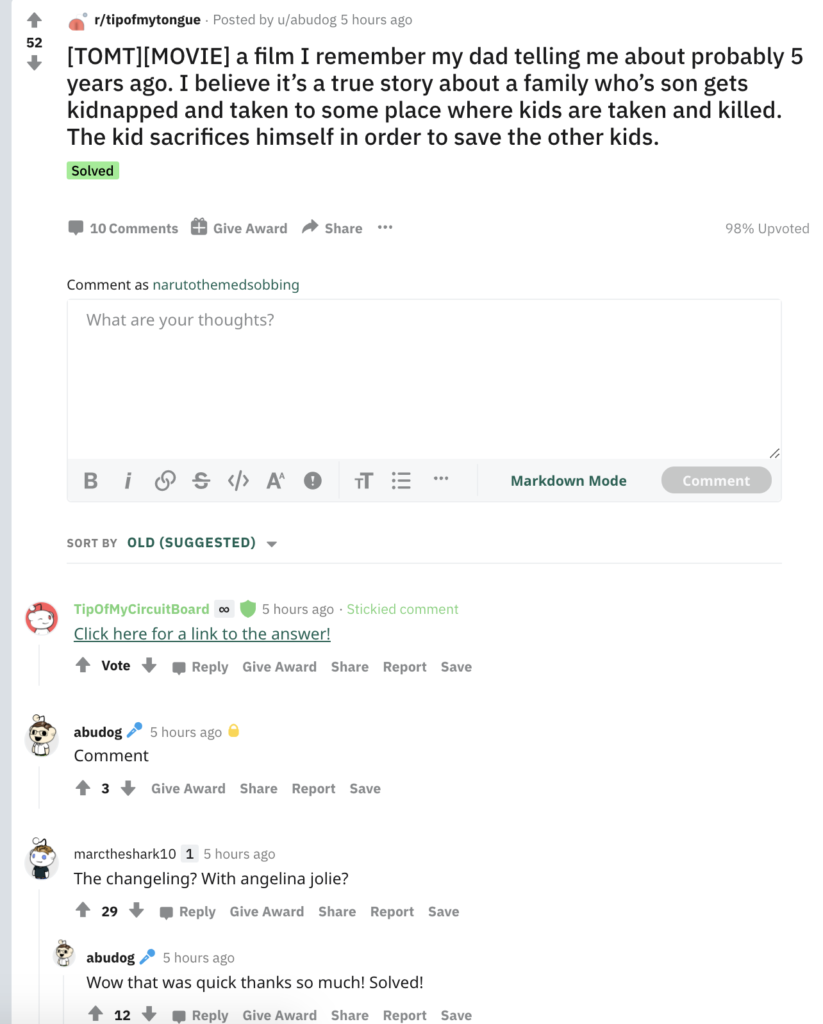
- Each post begins with [TOMT] and the format of the ask, in this case a [MOVIE]. Narrows it down pretty quickly, and subreddit frequenters who have established expertise in specific areas (be it web games or early 80s romcoms) can easily track things down.
- When the ask is solved, OP responds with a “Solved!” and a bot promptly changes the post tag and comments a direct link to the comment with the answer.
- Point is given to the solver. User flairs (the gray box next to usernames) contain TOMT points, indicating how many times the user how solved someone else’s ask. It becomes sort of a gamification system.
- Additionally, in response to a flood of questions being asked and abandoned, OPs need to comment on their own post before it’s visible on the subreddit.
It’s not a perfect system (what if several people respond with the right answer and OP awards the latest commenter instead of the first?), but it shows how these communities have designed systems under their constraints.
Other communities like /r/AmItheAsshole to gaming communities mashing together megathreads of questions, leaks, and official announcements do all they can, constantly exchanging practices and bending the limits of subreddit CSS to establish these customs in their community.
- Doing updates on posts that garner a lot of attention is a pain, there’s no standard for backtracking on links. As accounts disappear and moderators scramble to verify questionable users, offering any sort of progression on subreddits is a nightmare. (It’s a common joke that Reddit search is flaming garbage, and it is.)
…
To make content more accessible, we need to encourage an era of design that prioritizes longevity and cross-functionalism.
- It’s too hard to link to content we see on apps, and the amount of websites that gate users–requiring them to download or create an account before they can see material–is ridiculous. Look at Pinterest’s obnoxious home gate, or the amount of mobile websites that prompt you to download the app to look at one piece of content. Content will thrive on the internet when material can be cross-linked and referenced easily either on web or mobile. A counterexample: TikTok and Vine thrive because they’re spread everywhere, still maintaining their brand identity with their characteristic format and logo on the original material. It’s still easy to share and view them; the word of mouth spread and subsequent cultural significance makes up for pushes to optimize downloads.
- Reject platforms that destroy the basic building block of the internet: hyperlinks. To reject hyperlinks is to reject coherent thought, discovery, and exploration. Platforms that restrict us to linking to only other social media sites are the bane of today’s existence. Today, entire companies are founded on monetizing the one-link slot we’re given on platforms like Instagram. Beacons.ai, Linktree, Carrd, and other ridiculously simple site builders are beginning to see use by content creators, corporations, and mass organizations alike. Why did we base the web around hyperlinks then decide to do away with them?
- A conversation is multi-directional, but social platforms aren’t designed to reflect this. We backtrack, stumble, stutter. (See how Honk treats real-time messaging – with no “Send” button at all.) We navigate several threads of linear conversation at once on different platforms with a friend, with the acquired context of all that bystanders won’t comprehend.
When these types of conversations are elevated and become reference material, things get complicated. We need new modes of citation and cross-referencing that don’t take away from these natural flows of conversation (e.g. Twitter’s decision to be gentler with links and @s when navigating text limits). Who will be the first publication to set this standard, or offer a first take at it? - Bi-directional links come with a facet of social awareness, treating websites not only as linear structures or simple maps––but deep, interconnected structures and graphs. We know that a link can bring us from not only Point A to B or A to C, but A to Z, and a continuous mix of either. Webpages should be treated like nodes, letting conversations and interactions flow between different spaces in the internet. This is more reflective of human thought. Notion, Roam Research, and Obsidian are capitalizing on these modes of navigation and thought for knowledge bases.
- Webrecorder offers a suite of open source tools dedicated to making web archival more accessible. I haven’t fully checked it out yet, but they have a wonderful list of “academic and memory institutions” (and I will now be holding onto the term ‘memory institutions’) that make use of their tools.
- To aid humans in the act of preserving more idle moments (see: my Minecraft Server trailer is not important in historicity, but it’s important to me and my friends and unfortunately a very big defining moment of my childhood), we need to elevate content modes and information that we store. Metadata about materials needs human support to be meaningful; materials do not exist in silos and in isolation. If we design interfaces and systems that encourage more mindful, manual input and interaction with metadata, we can inspire better behavior from the humans that nurture and grow these packets of information.
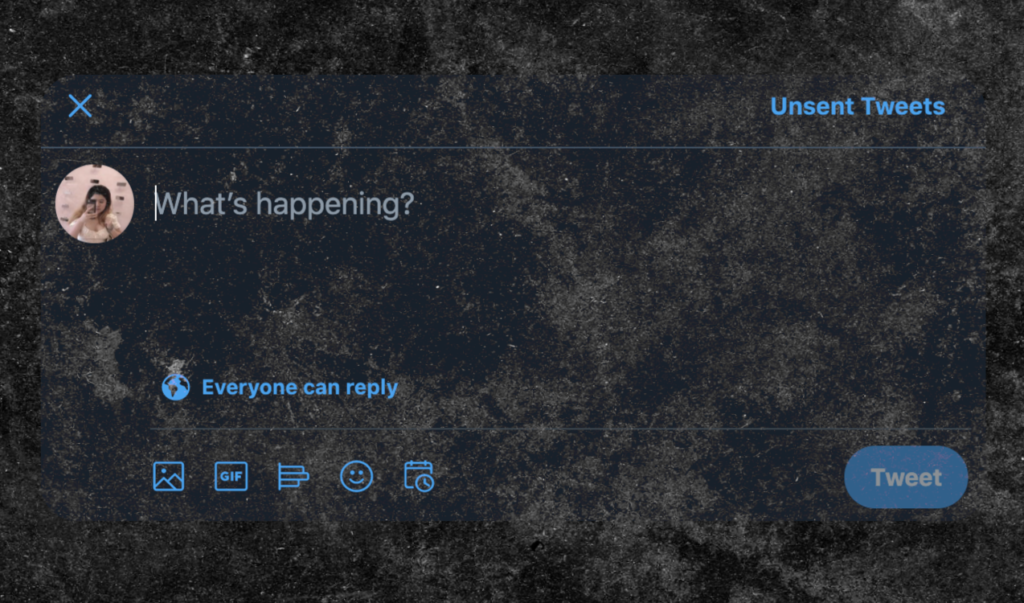
The role of humans
Tools are what we make of them. The web outstretched to what we can contain. When the tools we design make it easier for us to leverage them, it’s up to us to better capture experiences and moments––as they’re ours to consume in the end.
- We need content standards for linking towards and referencing content. While we see what Perma.cc is doing for academia and the Internet Archive’s Wayback Machine for books and webpages, there’s so much information that archival efforts for day-to-day drivel are simply unsustainable–even if they hold individual meaning. If we care about the life we live on the internet, humanity must take steps to take care of its words. Screenshots and links must be given the same level of importance. We must curate items and name them, nursing the information we save on our hard drives with as much context and metadata as possible.
- Recognize the gift of context in our interactions. That a response gestated in inquiry, thought, and processing is far more meaningful than an immediate reaction; that trust means questioning and inquiry. When we present an article to a friend, we trust that the entire thing bears material meaning. All its hyperlinks, the publication itself, the overall topic. We delve into it deeper, returning questions and more references. Thinking of someone when encountering something means sharing a snippet, and receiving a world of wealth back.
- Our culture of creation has never been stronger. Everyone is a producer, everyone has the means to share their talents online. My friends and family are knitters, illustrators, freelancers, writers, bloggers, tweeters, photographers––each craft as valid as the next when they’re all given the same attention span on the high-speed internet. With this, we’ve seen significant movement in the value of giving credit. Everyone is a creator or curator; reddit will mob posters who don’t source content, “OC” is as serious as ever. This is much unlike a decade ago where most people would give original pieces passing glances. Everything is watermarked, defended, sacred; production is a familiar act, and we protect because we know how it feels.
This move towards giving credit where credit is due says a lot about an interlinked web. We know people who will trace back sources, reverse image searching their way to original creators. Provenance is questioned less. It’s still difficult to navigate with the wealth of information and how rapidly things spread––but we’re better at establishing cultures where content is respected and links are given to find pieces back to home. The easier it gets to give credit, the better we’ll be able to preserve content –– and give voice to where it started from.
Aided by designers, Twitter makes this easy for video. People can simply hold and tap on any clip and tweet it, no saving needed. When a video is tweeted, the video’s source is present at the bottom. (See: From Xiao Updates, thank you Venti!)

Today’s wealth of information and our inability to properly utilize our technological tools in an age of rapid evolution may be one of our most human challenges. Picturing the information loss we face if we do not immediately set better standards for the preservation of the web is terrifying.
Perhaps there are is also an alternate future that treasures the web as a cursory thing: a mode of communication as brief as idle conversations we have day-to-day, situating the role of preservation to the analog. A passing interface that performs its functional role, then dissipates. Temporality as a product point or feature (disappearing messages, conversations, etc.) will need to come to a conclusion on whether everything is eternal––or if nothing is. Tese two can’t simultaneously exist on the same, centralized web we have today.
The most radical attempts to reshape the human are typically carried out under this guise of reinforcing and protecting the human. Design is a paradoxical gesture that changes the human in order to protect it.
Beatriz Colomina, Are We Human?
It’s unfortunate that the age of disinformation and decay needs a large-scale rethinking of our current engagement with the internet. No prodding or nudges will solve this. We need new tools and media that birth an epoch of mindfulness, permanence, and meaning to our interactions; tools that will reframe our thinking. What is design if not something that forcibly changes our behavior in the act of human preservation?
Parting Questions
- When will there be a guide to best practices for archiving the web?
- Will the giants responsible for the platformization of the web make the act of digital archival any easier for us?
- Is it foolish for platforms like Snapchat or Instagram Stories to brand themselves as “temporary” when temporariness is impossible on our internet?
- Should the web exist as something organic, malleable, and destructible –– or as an eternal timekeeper?
- Is link rot more of a technological issue or a human one?
- Do humans want to know themselves forever?
Last updated January 23
